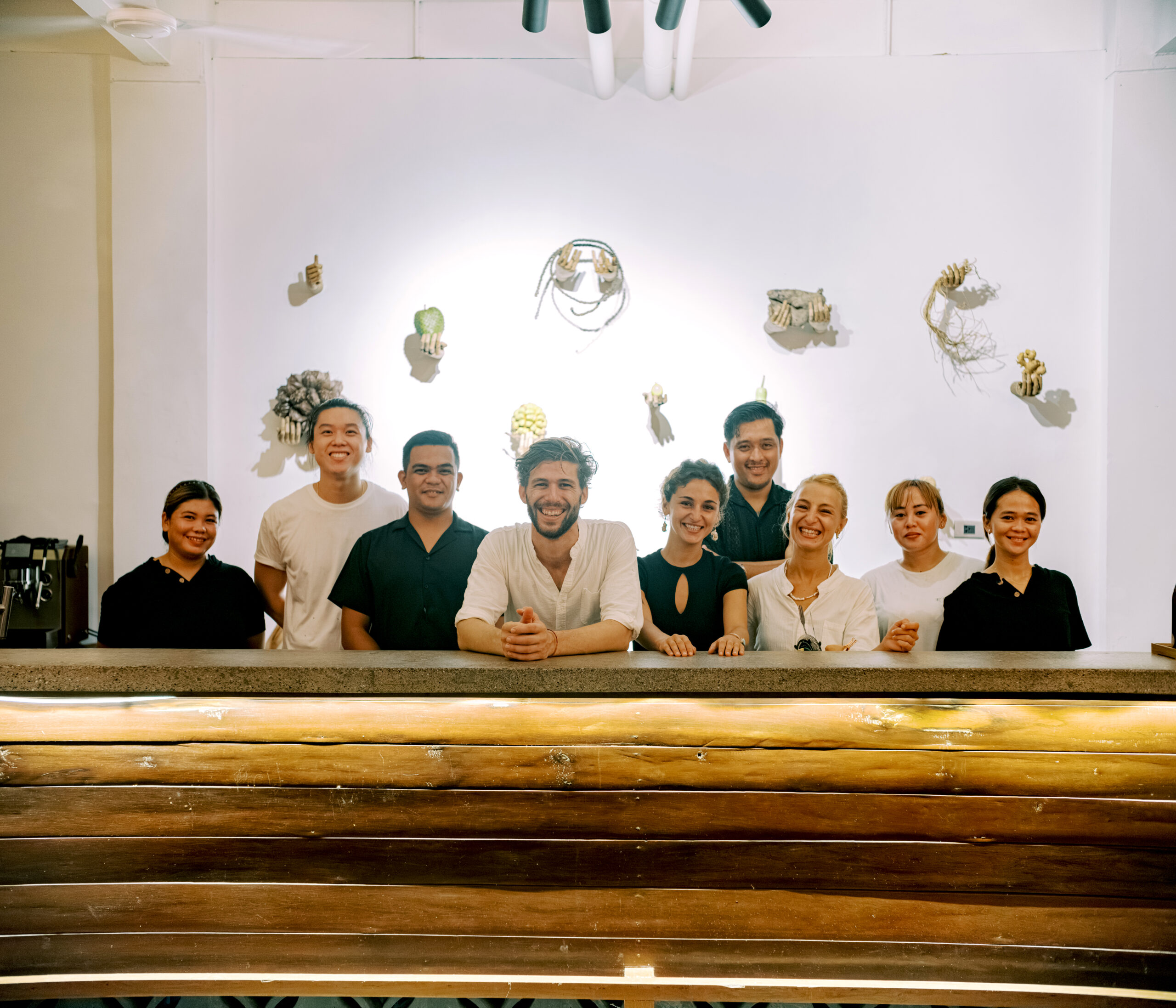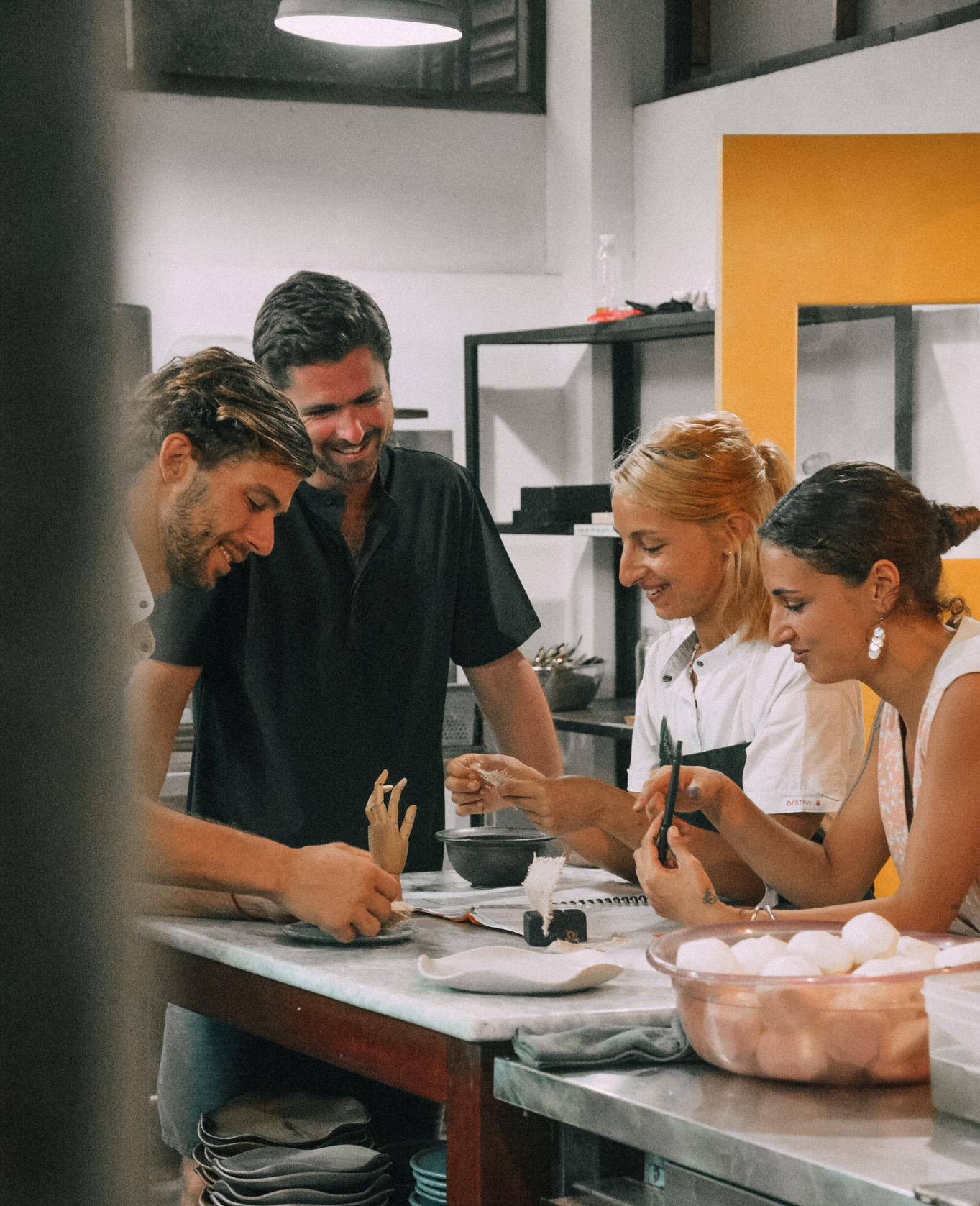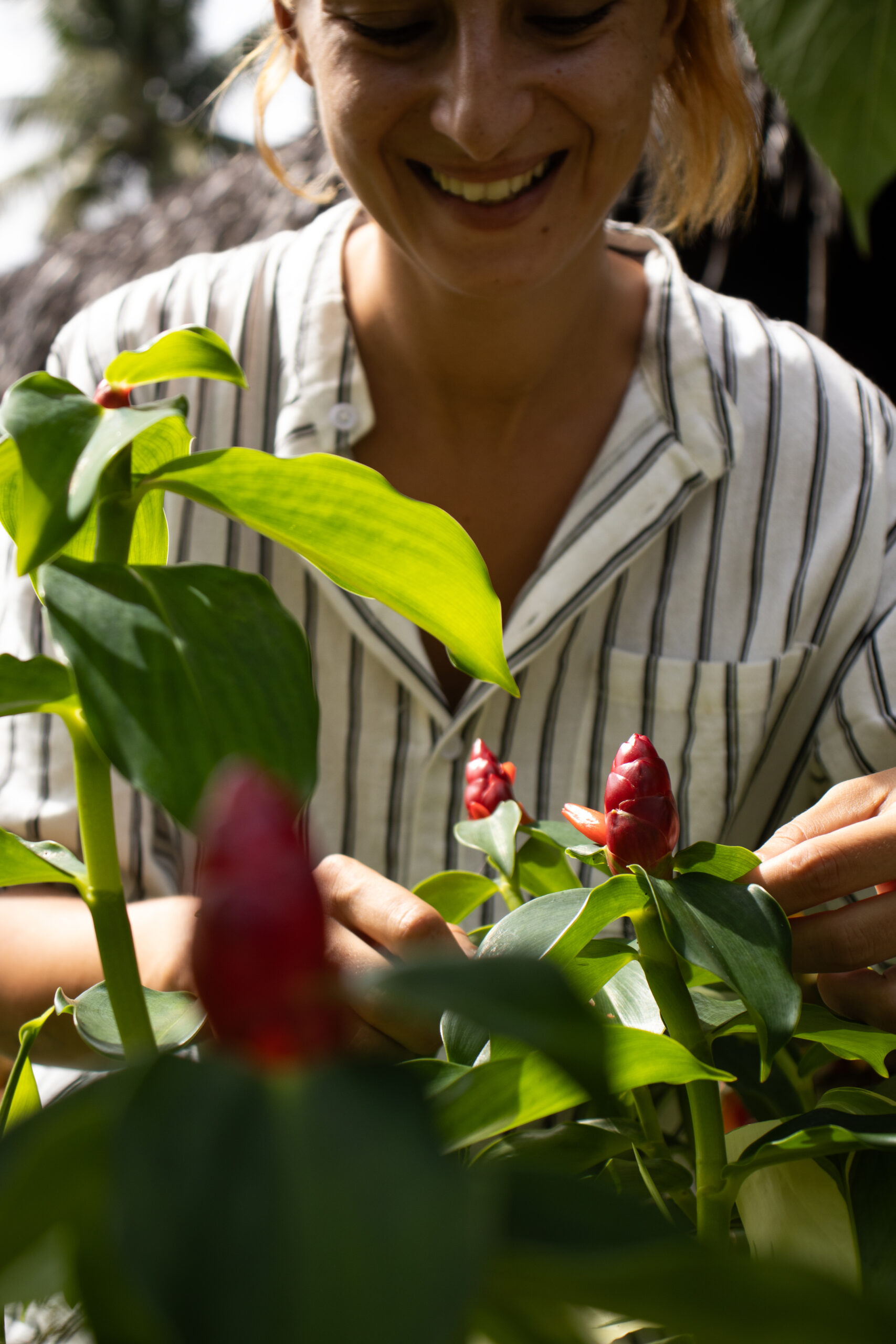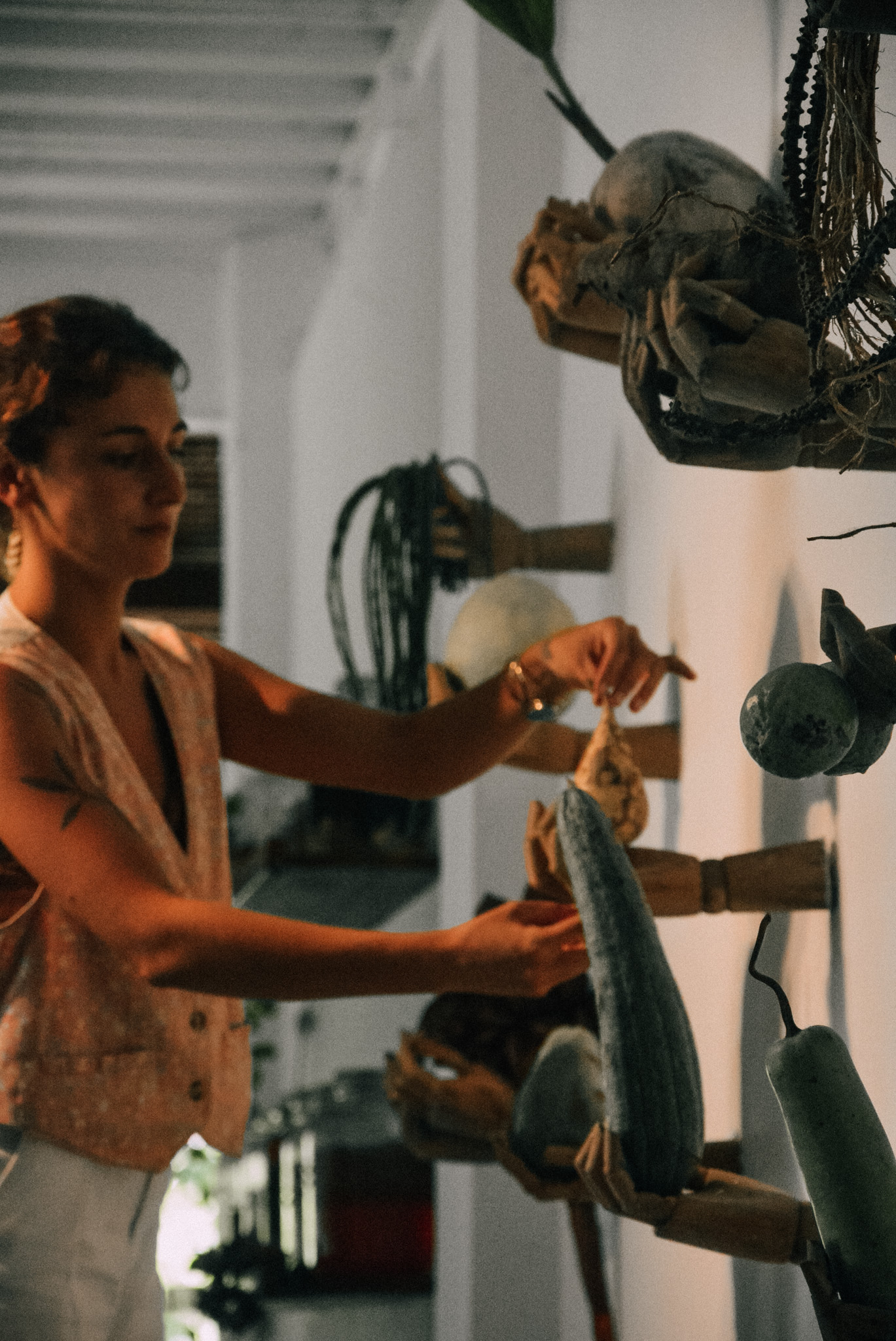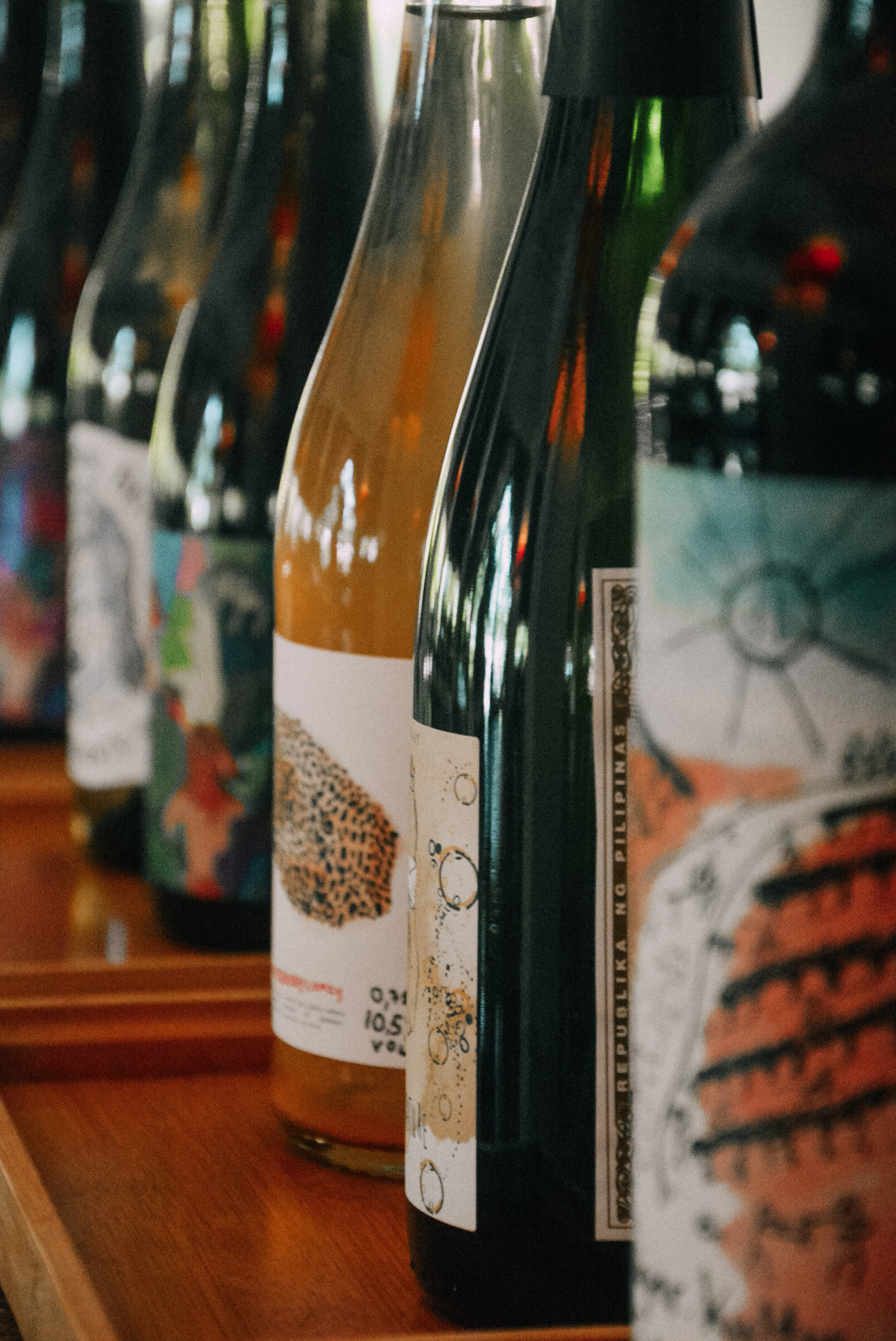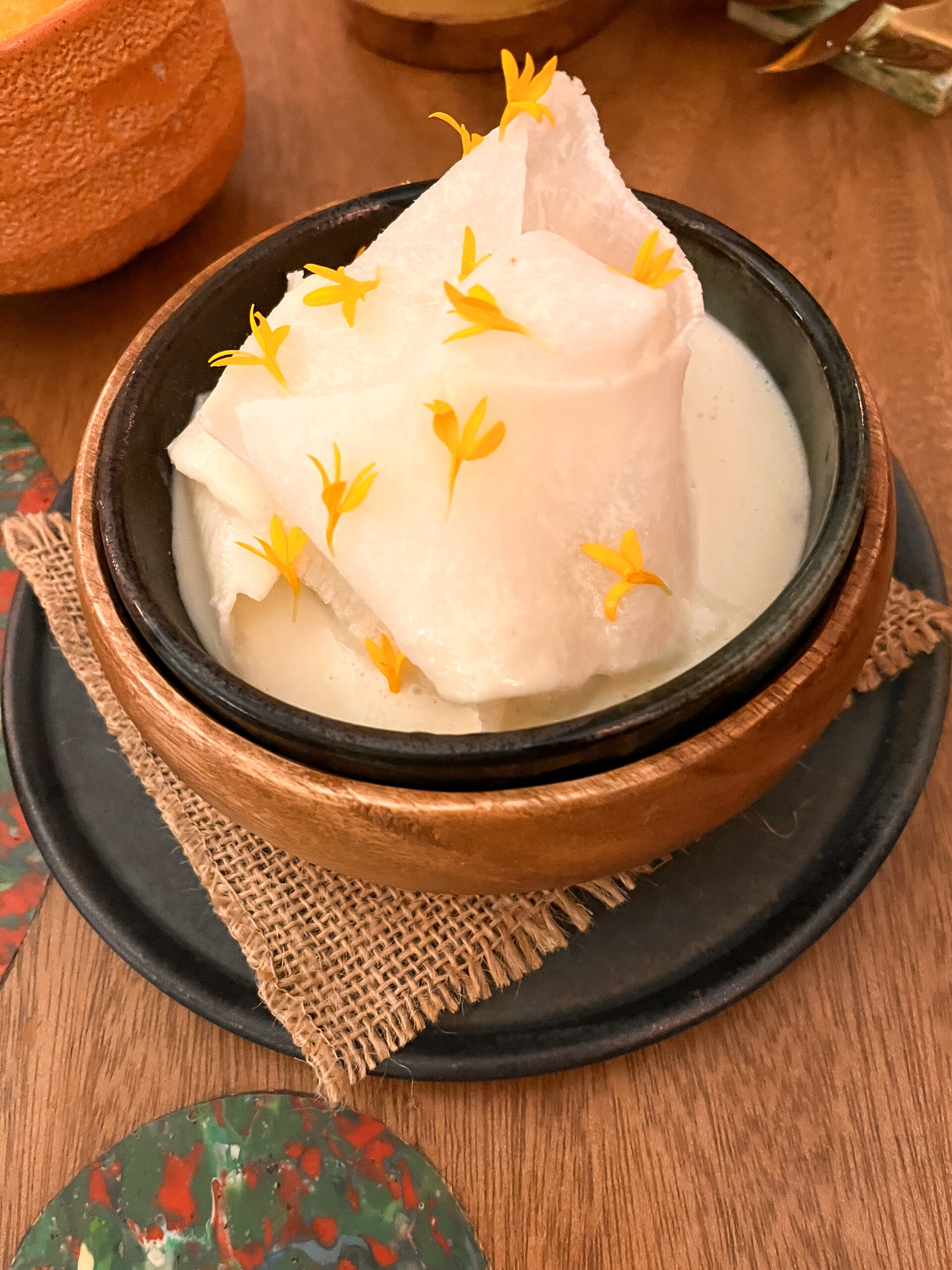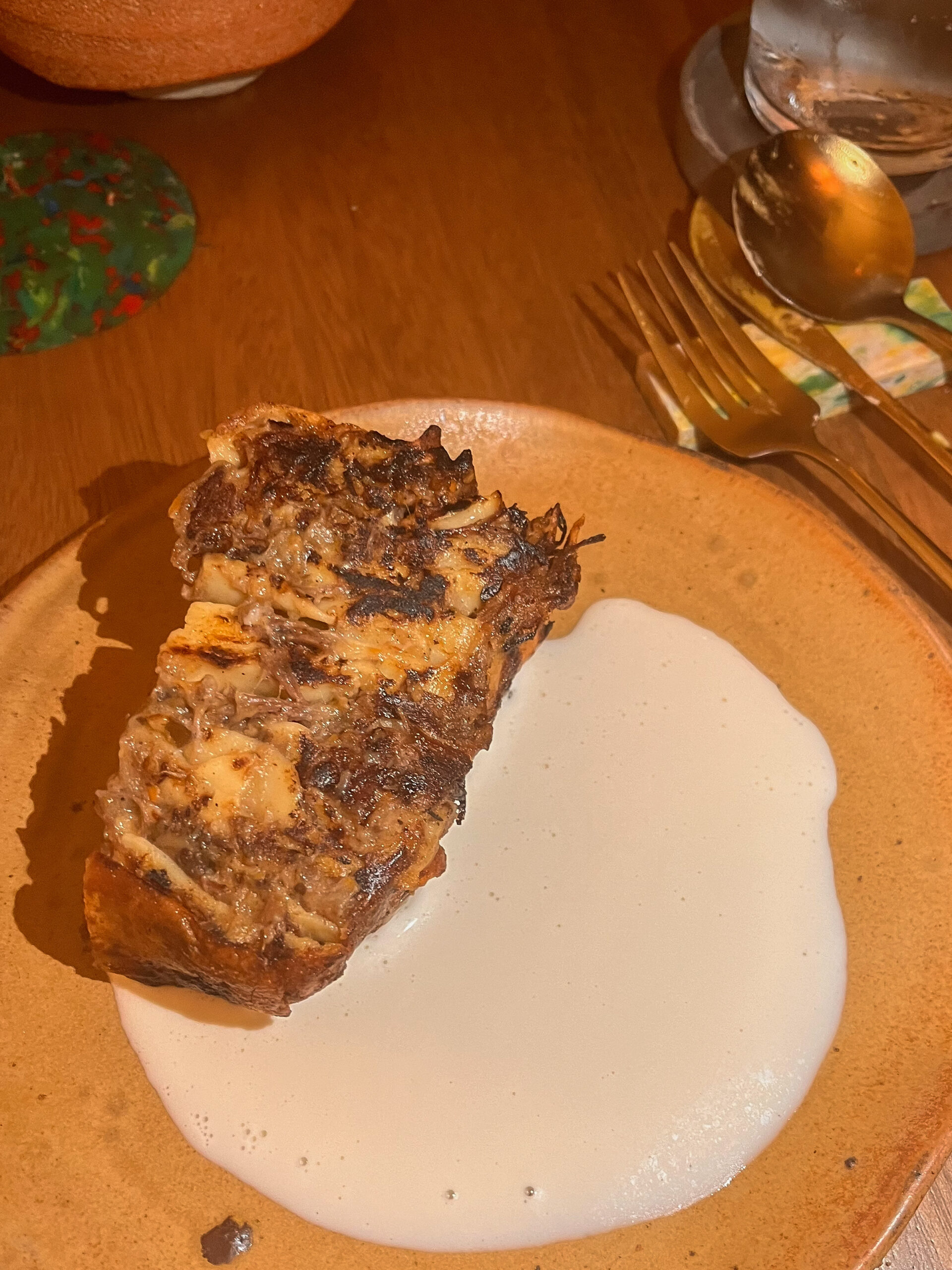Uprooted from around the world and planting seeds in Siargao, this restaurant elevates the island’s culinary scene with interdisciplinary and sustainable practices
Two things intrigued me about Roots. First, the name. Second, the moveable feast of a wall, with disembodied wooden hands gripping flowers and cradling fruits. This intentional art installation showcases the menu’s ingredients of the day, as well as what produce the team is researching at the moment.
Just off the main road of General Luna, Roots, located within Kaimana Resort, has a bahay-kubo–inspired, open-air design that blows the sea breeze in from its lush surroundings.
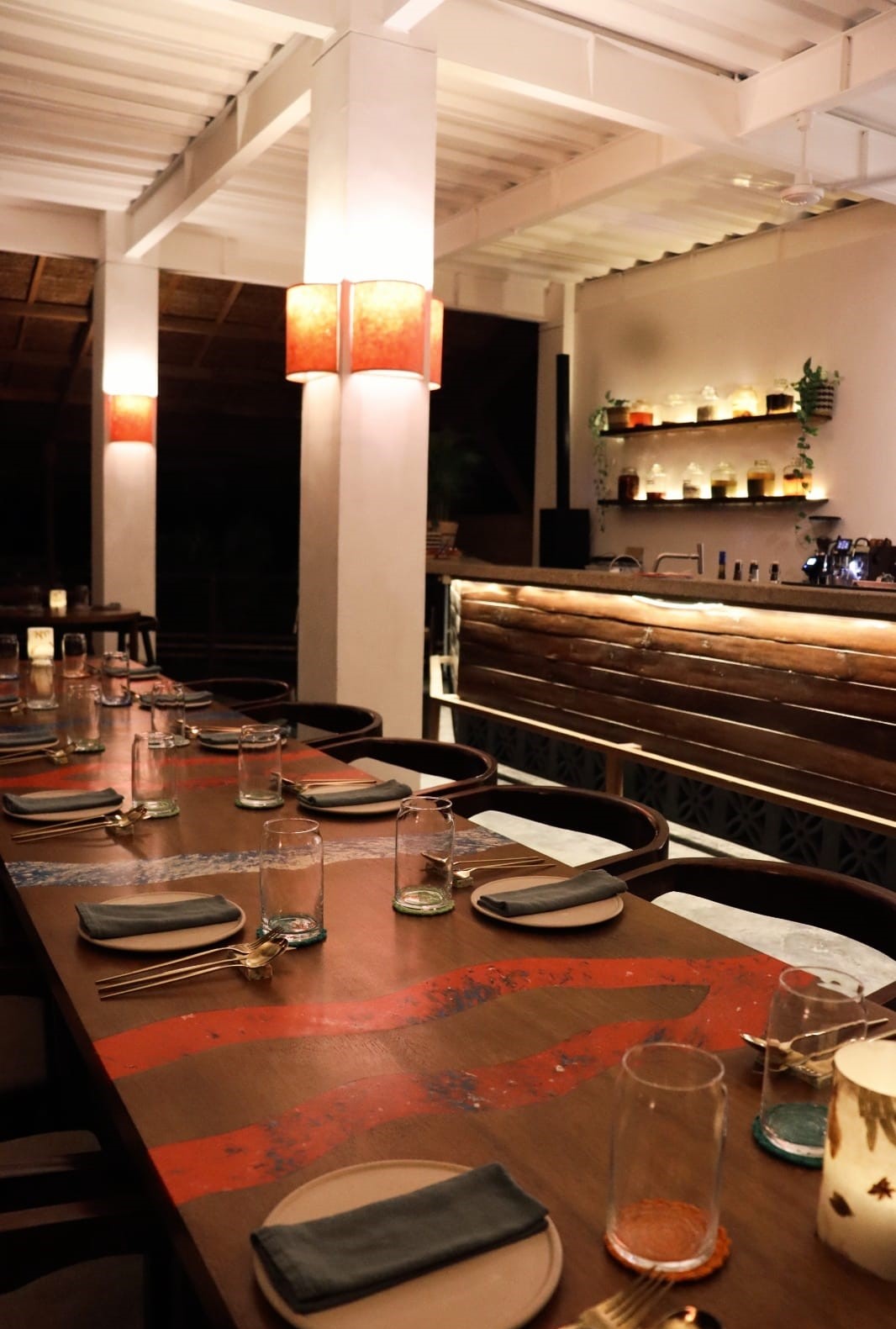
Since opening last September 2023, Roots has blossomed into a culinary hotspot in Siargao.
In an interview with LIFESTYLE.INQ, we get to know the founders’ origins and their next-level sustainability initiatives while walking through a damn good tasting menu.
Unearthing Roots’ Vision
What’s in a name? For Roots, the name reflects the founders’ roots in different countries and disciplines—and how these connect with new roots in Siargao.
The restaurant fuses the founders’ Spanish, Italian, Mexican, and Portuguese heritage into a cuisine that utilizes Philippine produce.
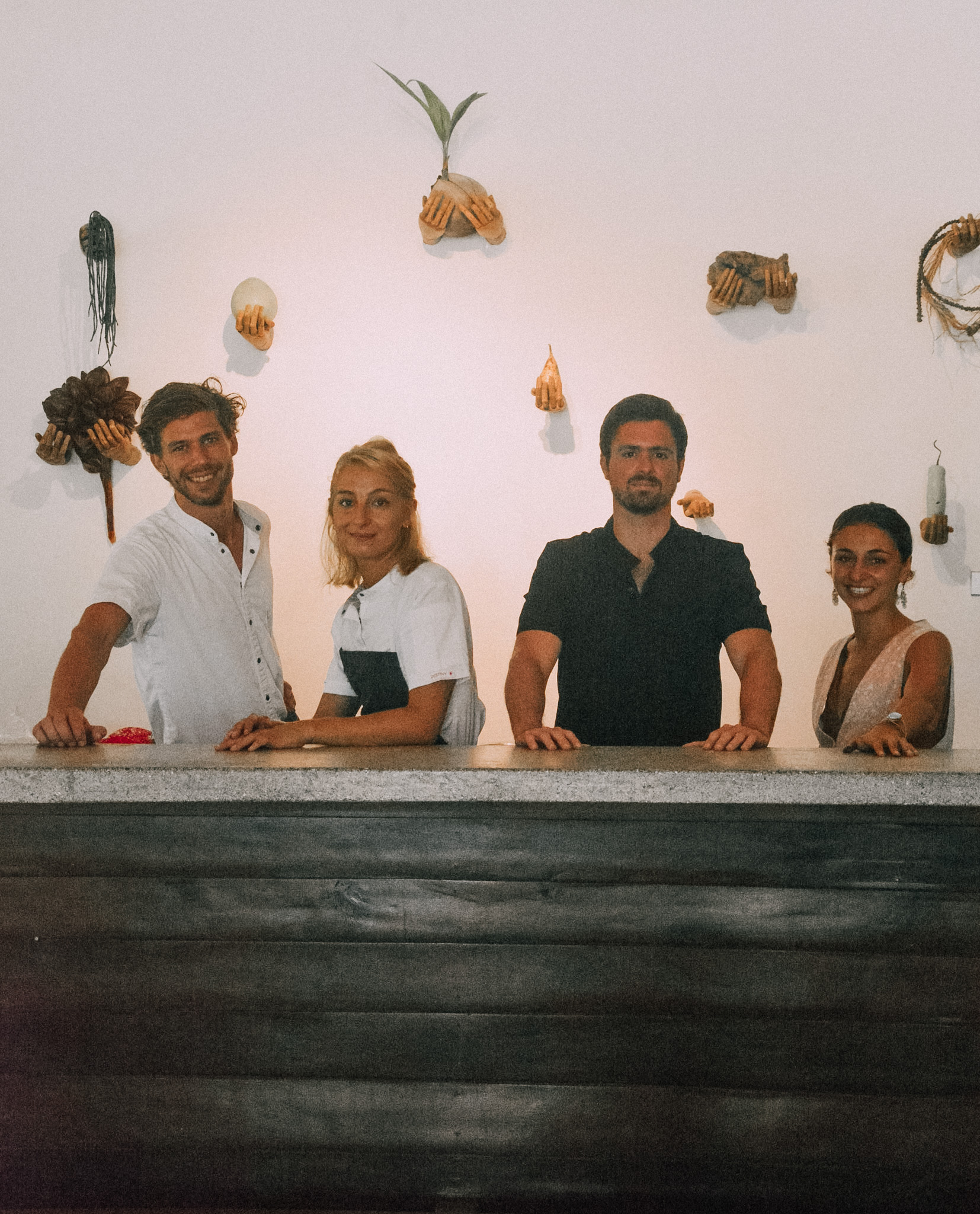
Founders Inés Castañeda, Marina Castañeda Matos, and Filippo Turrini first met several years ago in Peru and worked together at Central in Lima, crowned the World’s #1 Best Restaurant of 2023, later meeting Ricardo Miranda de Sousa through a mutual link.
Years later they reconnected and developed Casa Kaos, which Ricardo describes as, “The mother of all projects that we have in mind.”
“What we’re trying to create is an ecosystem of concepts, not all F&B but in different fields, always with that common link of interdisciplinarity and a local approach to things.”
Inés tells us, “We discovered that as chefs, we could do much more outside the four walls of the restaurant.”
The Roots team has six partners in total, but if you come to Siargao, you’ll meet a team of four who each bring a unique flavor to their day-to-day operations.
Sisters Inés Castañeda and Marina Castañeda Matos were born and raised in Spain by a Mexican father and Portuguese mother.
Inés goes by Creative Director and “artistic cook.” With a knack for visualization, she studied and worked in cutting-edge restaurants in Spain, Australia, Japan, Indonesia, and Peru. Apart from working on the kitchen floor, she did culinary research at the foundation of El Bulli—the world-renowned ground-breaker in molecular gastronomy.
Meanwhile, her sister Marina is the Design and Art Director, as well as the front-of-house. She previously worked as a gastronomy researcher, art curator, and product designer in Mexico, Denmark, Spain, Italy, Indonesia, and Peru. But at Roots, she primarily focuses on design—from the tables to the crockery, and what she calls “‘The sixth flavor: The taste of the environment.”
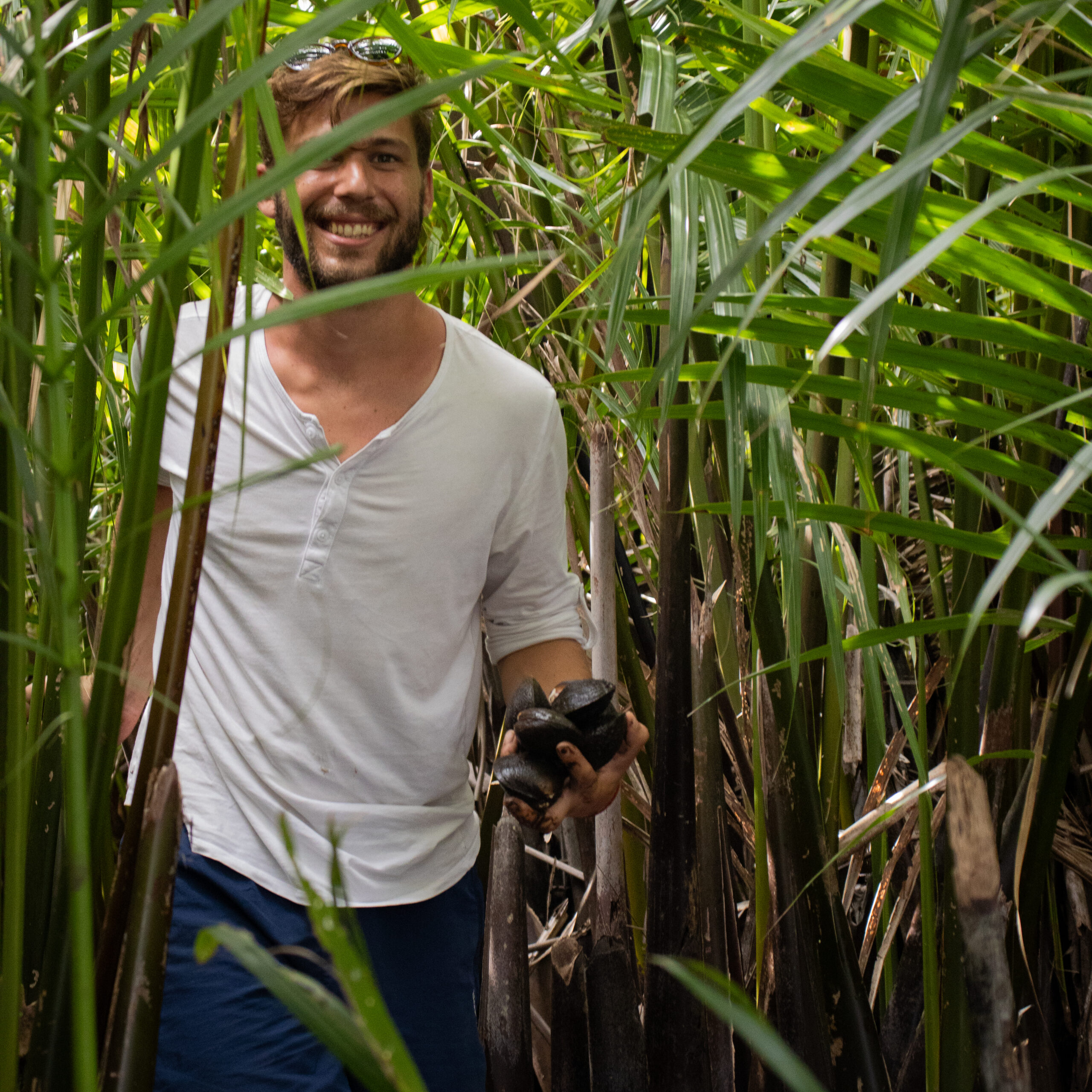
Partner to Inés, Filippo Turrini stands as the Culinary Director. Originally hailing from Florence, Italy, he has worked in some of the best restaurants in the UK, Spain, Uruguay, the United States, Indonesia, and Peru, such as the Japanese izakaya Sosharu in London to Zaranda in the Balearic Islands.
While the majority of the team has a brilliant track record in the gastronomical world, Ricardo Miranda de Sousa, who is married to a Filipina, played a pivotal role in the team’s decision to establish the restaurant in Siargao.
Also possessing a mixed Portuguese and Spanish heritage, his work in management led him to Colombia, Nigeria, Egypt, Panama, Spain, Peru, and eventually the Philippines where he now brings his sustainability expertise.
Fruits of Labor: A Sustainable Ethos
At the foundation of Roots is a push for authentic sustainability. They source 90% of ingredients locally and maximize these ingredients in each dish’s cycle.
This ethos extends to their goal of building accountable, traceable networks by creating close relationships with collaborators.
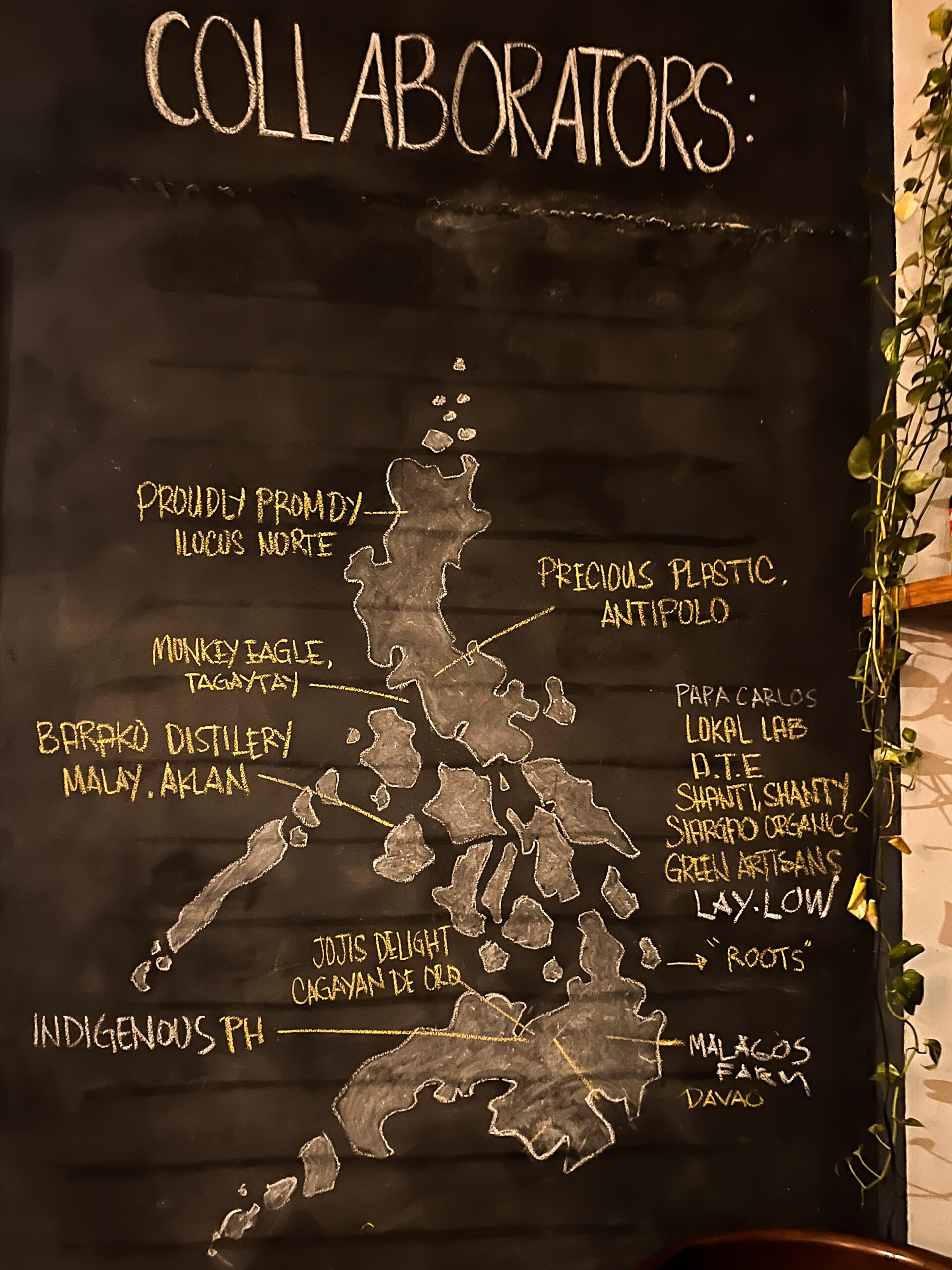
Filippo sings praise for the cheese and chocolates of Malagos Farmhouse in Davao. The team also tells us how they foraged young Nipa fruit, a jelly-like mixture they experimented with in ceviche.
They also re-tell their first encounter with langka, brought from home by their manager. Inés expresses, “We are super open for the team to bring us produce. They know the country and the biodiversity better, of course.”
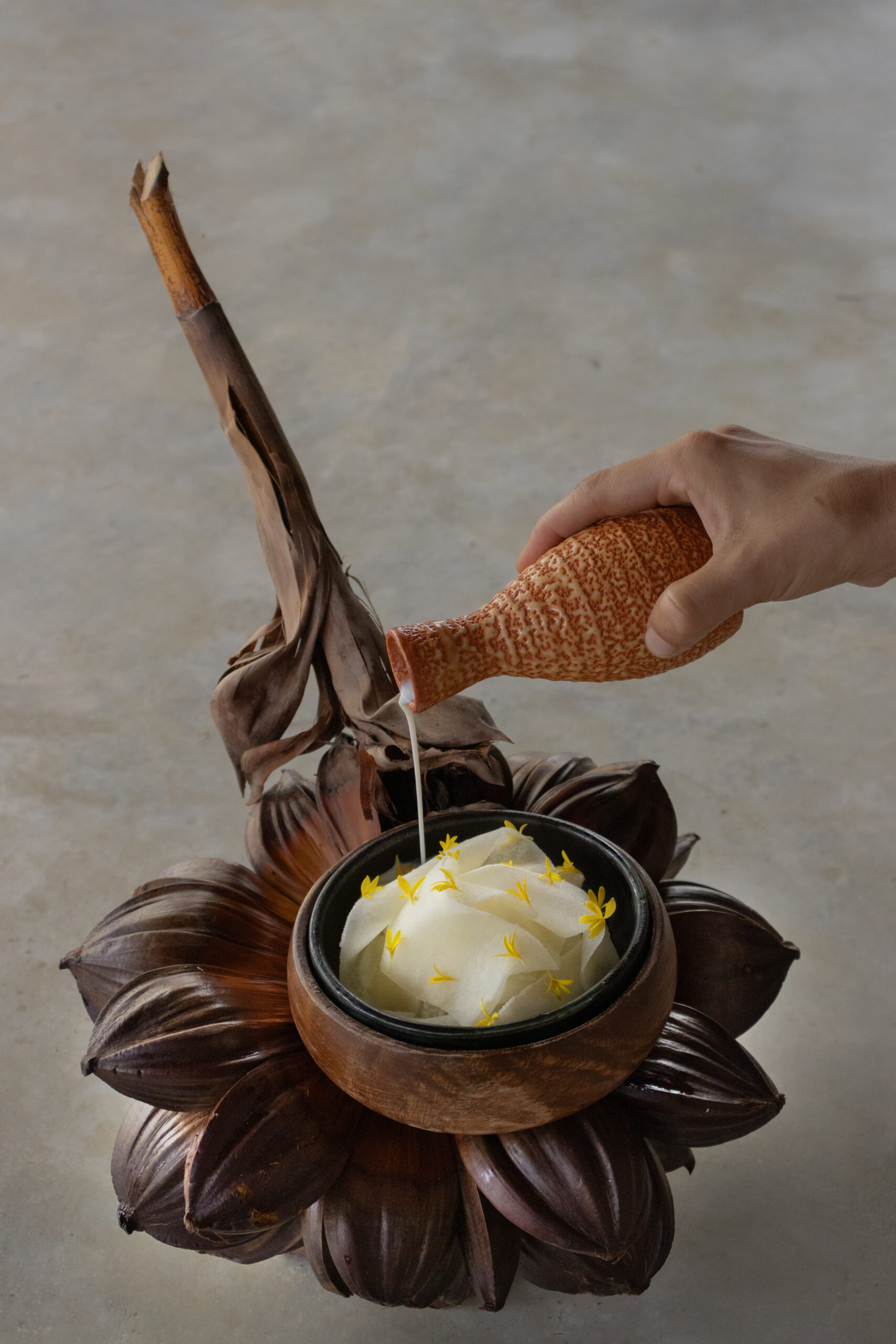
Living on an island can be challenging, especially with logistics, but the team shows a driven sense of commitment.
Demand drives the market, but they work to bring in ingredients even if routes aren’t established, prices are high, and deliveries are inconsistent.
Ricardo quips, “You have to find your own way of bringing things… pulling different strings, connecting the dots until you find the right suppliers. It’s a lot of work, a lot of hours.”
Inés says, “It’s a part of research and every day we have a different kind of challenge.” To which Marina adds,
“Every week we have a new ingredient that we don’t know… And we love that.”
For over a month, Marina also stayed in the Precious Plastics HQ in Antipolo. She is now planning to transport the hulking plastic recycling machine from Rizal province—another initiative bound to change the island’s evolving landscape.
Filippo recounts another story where he and Marina hopped on the back of a truck to drive to Cagayan de Oro, just to see where the ingredients were from. He tells us “We are at the market at three o’clock in the morning so we see how everything works—It’s super incredible.”
The Ever-Evolving Menu
In line with sustainability, the Roots menu changes daily, showcasing only the freshest ingredients. The daily menu is subject to at least 50% small changes. At present, the kitchen has already created about 70 dishes.
We visited Roots twice—once for the ala carte menu and the other for the degustation. Compared to Manila tasting menus which can reach an easy P4,000, the seven-course meal was priced at only P1,700 and was paced and patterned in a way that elevated the flavors.
For our aperitif, we tried the R&D, a cocktail mixed with tapuey, the syrupy traditional Cordilleran rice wine. It was topped with candied pomelo.
Another crowd favorite was the Calamancello Sour with swirling egg whites. Bartender Joseph came out to show us how the calamansi is steamed, grated, and fermented for months on end.
Each meal at Roots starts with the Salvaro or cassava crisps—inspired by the women of Barangay Socorro who visited during construction to sell the snack. The dip was made with ube and onion emulsion, enhanced by vinegar and salt.
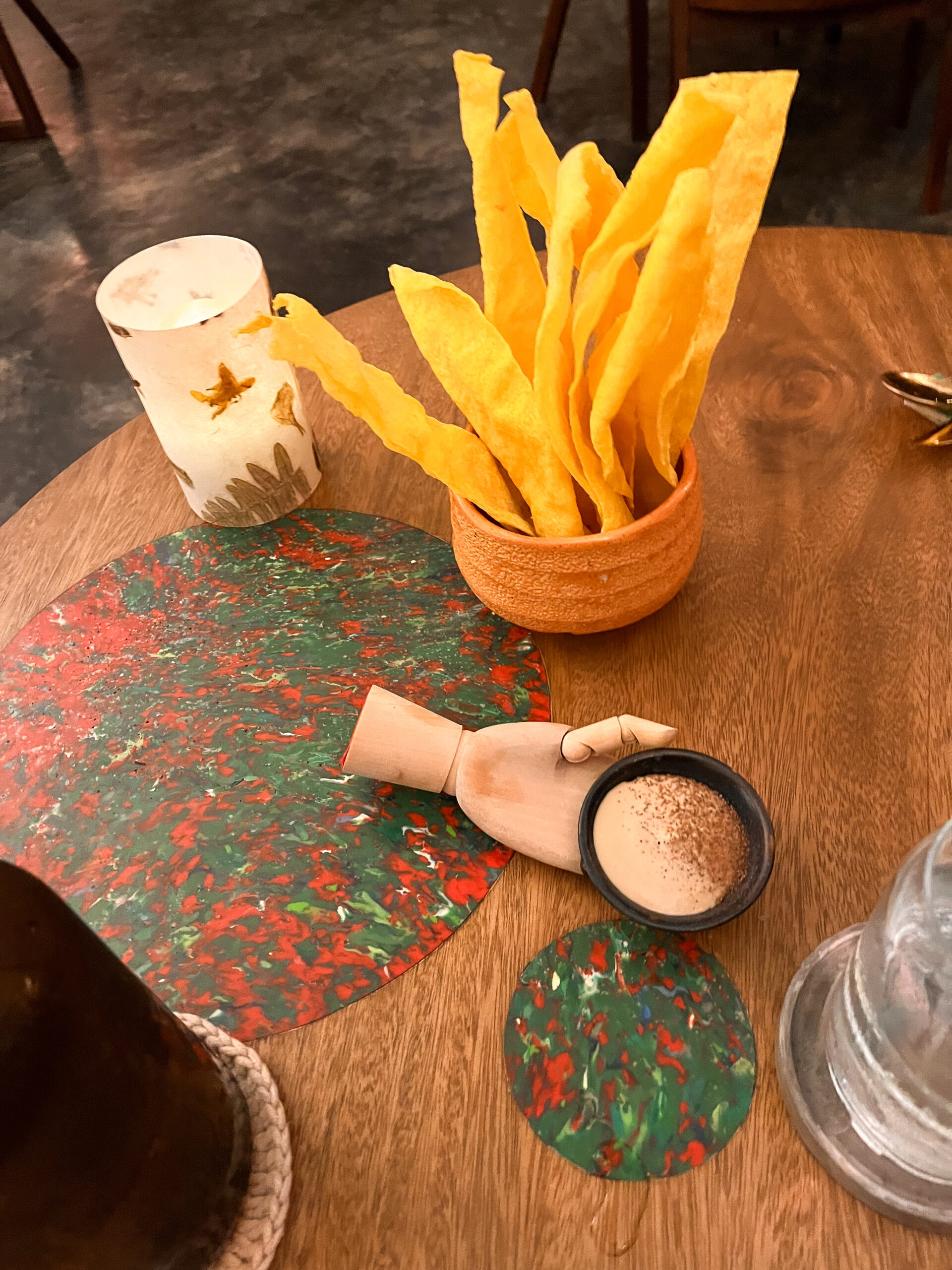
The bread, possibly the best I’ve ever had, included a perfectly crusted Italian focaccia (based on Schiacciata from the chef’s Tuscan home), local Shanti Shanty’s sourdough, and slightly burnt sweet potato brioche. They were served with browned butter and a candied hibiscus emulsion.
The first main, Rainbow Runner or Filipino Salmon, was cured with lato sea grapes and topped with sea urchin and pepinitos—a vegetable that pops in your mouth, which the team discovered through local children playing with the vegetable on the street.
Taking from their roots in Peru, there was a ceviche akin to Philippine kinilaw, which used citrus and coconut milk instead of vinegar. Pickled singkamas encircled the catch of the day, decorated with edible flowers.
I was pleasantly surprised by the Carabao Lasagna, apparently a specialty at provincial festivals, which removed my reservations about eating retired work animals. The meat was marinated for three days to mouthwatering softness. The ragu emanated a taste akin to lamb and goat. Based on Filippo’s Italian nonna’s recipe, it included smoked eggplant and Malagos Farm’s Borracho cheese, a goat’s milk cheese aged in dark beer.
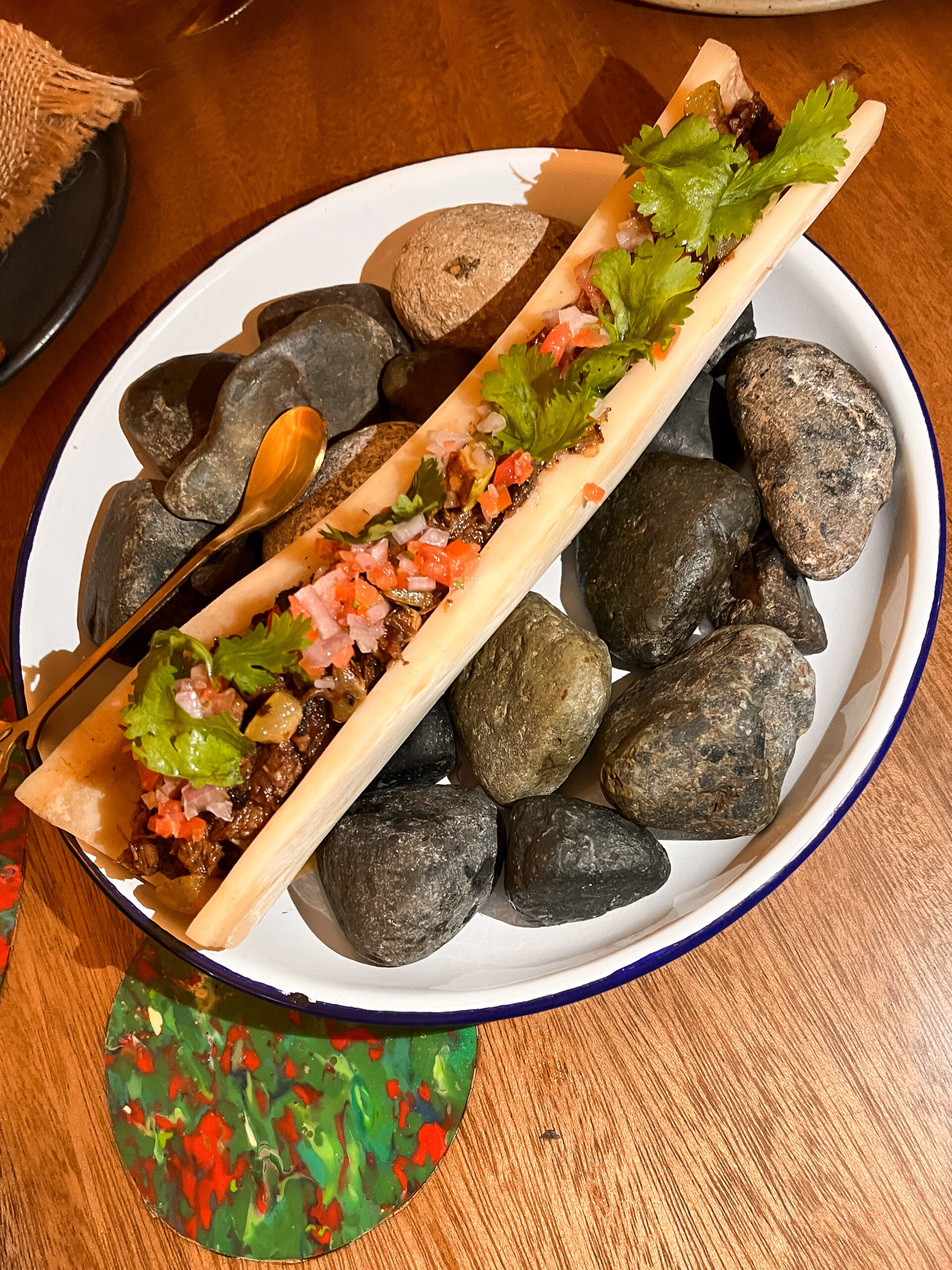
The final entrée, Dys Taco, featured a rich combination of bone marrow and brisket in a taco, flavored with “Grandma’s Mole.” Accompanying this was a unique squash hybrid of a melon and white pumpkin, from the Lokal Lab, farms.
For dessert, guests enjoyed a Calamansi Pie and a Cacao and Chili Crumble, made with Malagos chocolate in tuille form.
The service was excellent throughout. Our waitress Zai was notably attentive. When I expressed how I was so impressed, Marina told us how this is the first restaurant job for many of the staff, and that they are drilled through written exams on communication and service.
A Culinary Movement
While full of ambition, the concept of the restaurant is honest, ultimately creating an experience that makes each meal feel like an adventure.
Marina describes this sense of discovery in the restaurant as “in the middle of something casual and fine dining where people on the island can go to relax after a day of surfing or exploring… It’s not fine dining. It’s fun dining.”
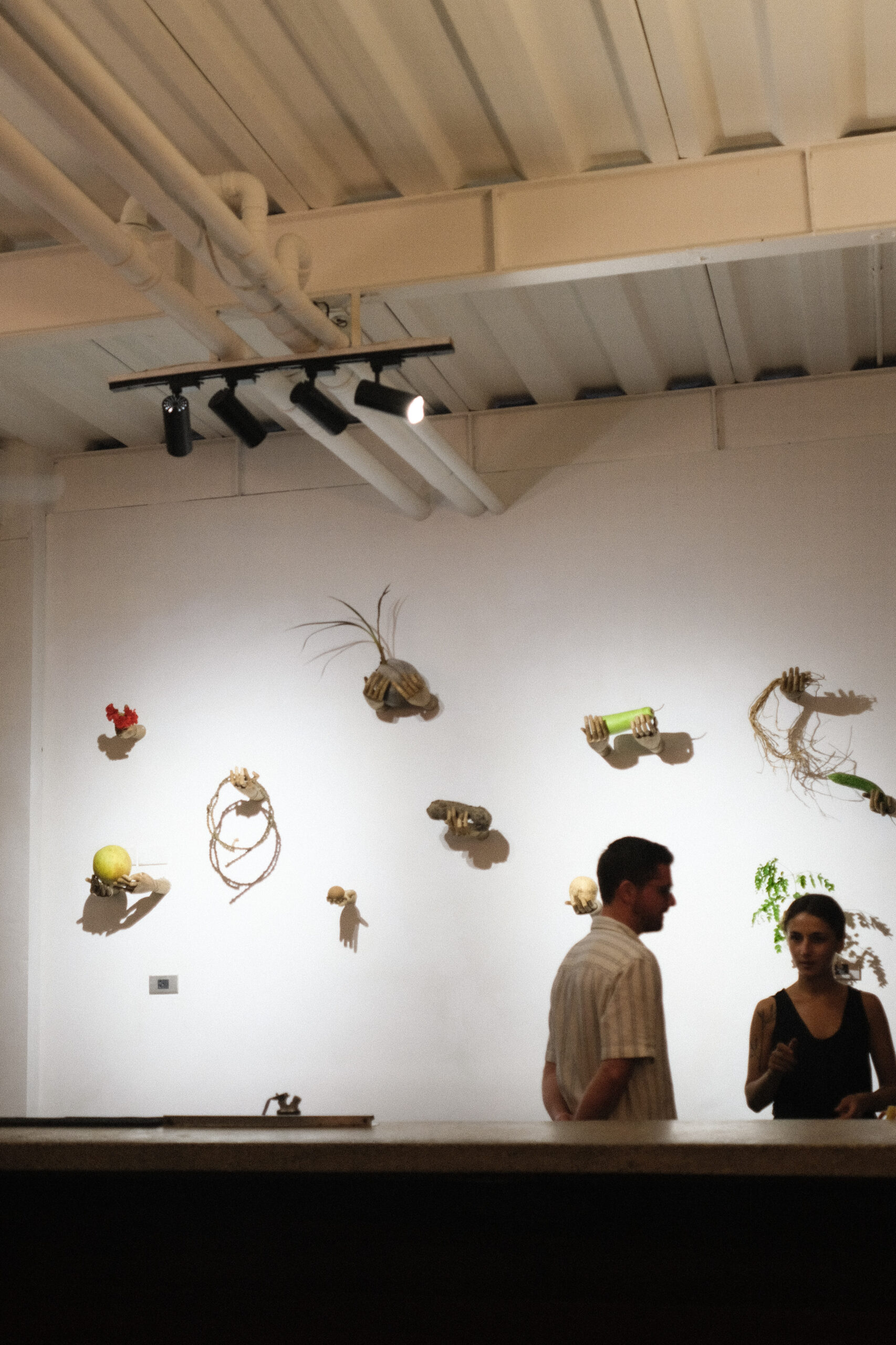
Be it the meticulous sourcing of local ingredients or their dedication to community engagement—Roots’ vision pushes us to take a look at the ingredients we already have in the Philippines.
Inés says, “When we arrived here in April last year, we thought, ‘How can Filipino cuisine not be at the same level internationally as say, Vietnamese cuisine?”
“It [Filipino cuisine] has so many things to offer including incredible biodiversity and an exchange of cultures.”
Ricardo adds, “One of the amazing things about the Filipino market is the openness to crossing boundaries. In other cultures, they’re very passionate and protective of how you use their ingredients.”
“They’re more open than Italians,” Filippo jokes.
It is not just Filipinos, but also the Roots team themselves who are so open to giving Filipino cuisine a shot. Their passion is contagious, which infuses the whole dining experience with excitement.
Through meals rich with stories from around the earth, Roots makes a model for the future of dining—one that showcases how gastronomy can flourish with nature that is locally grown.
